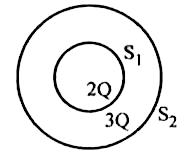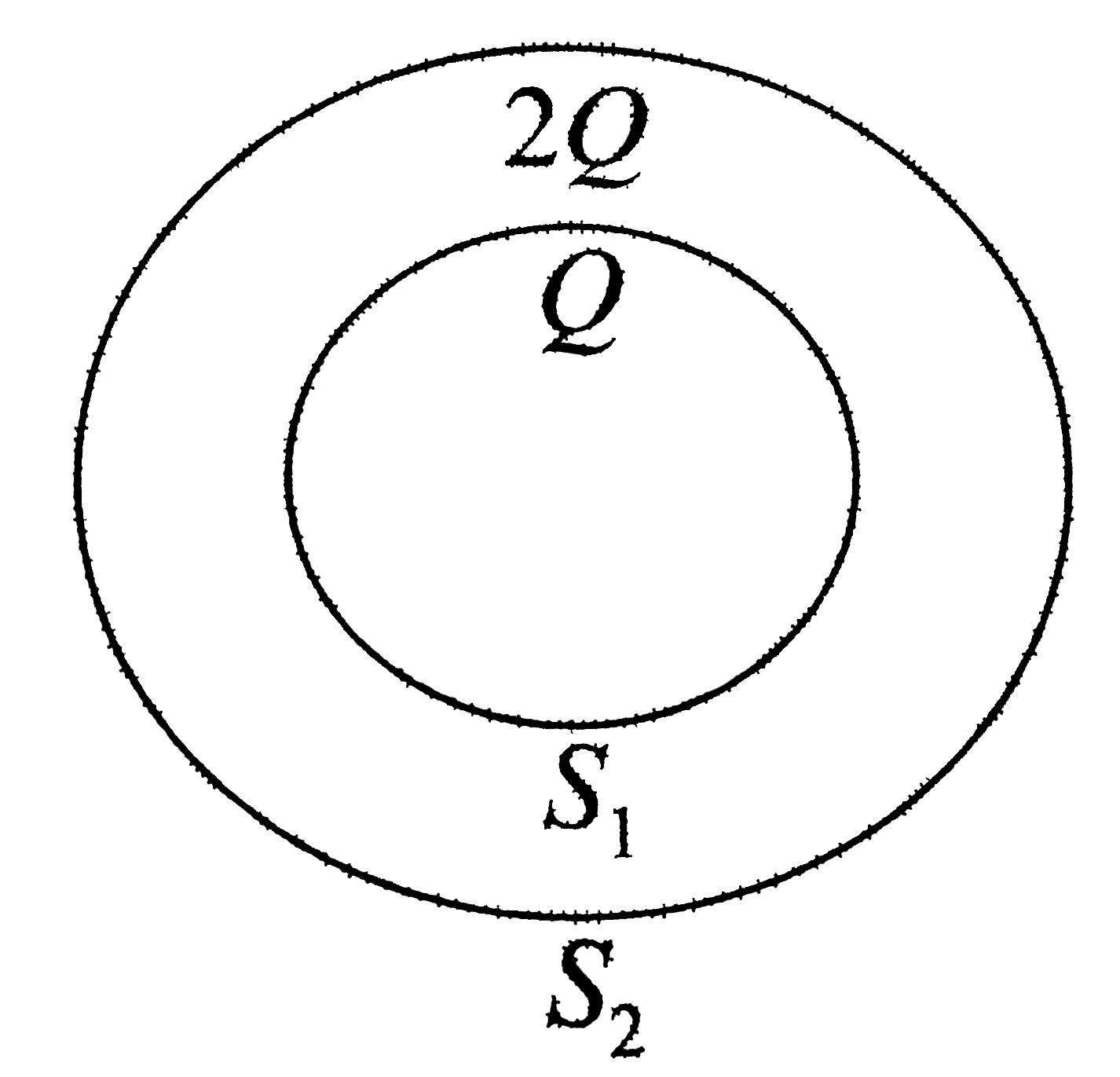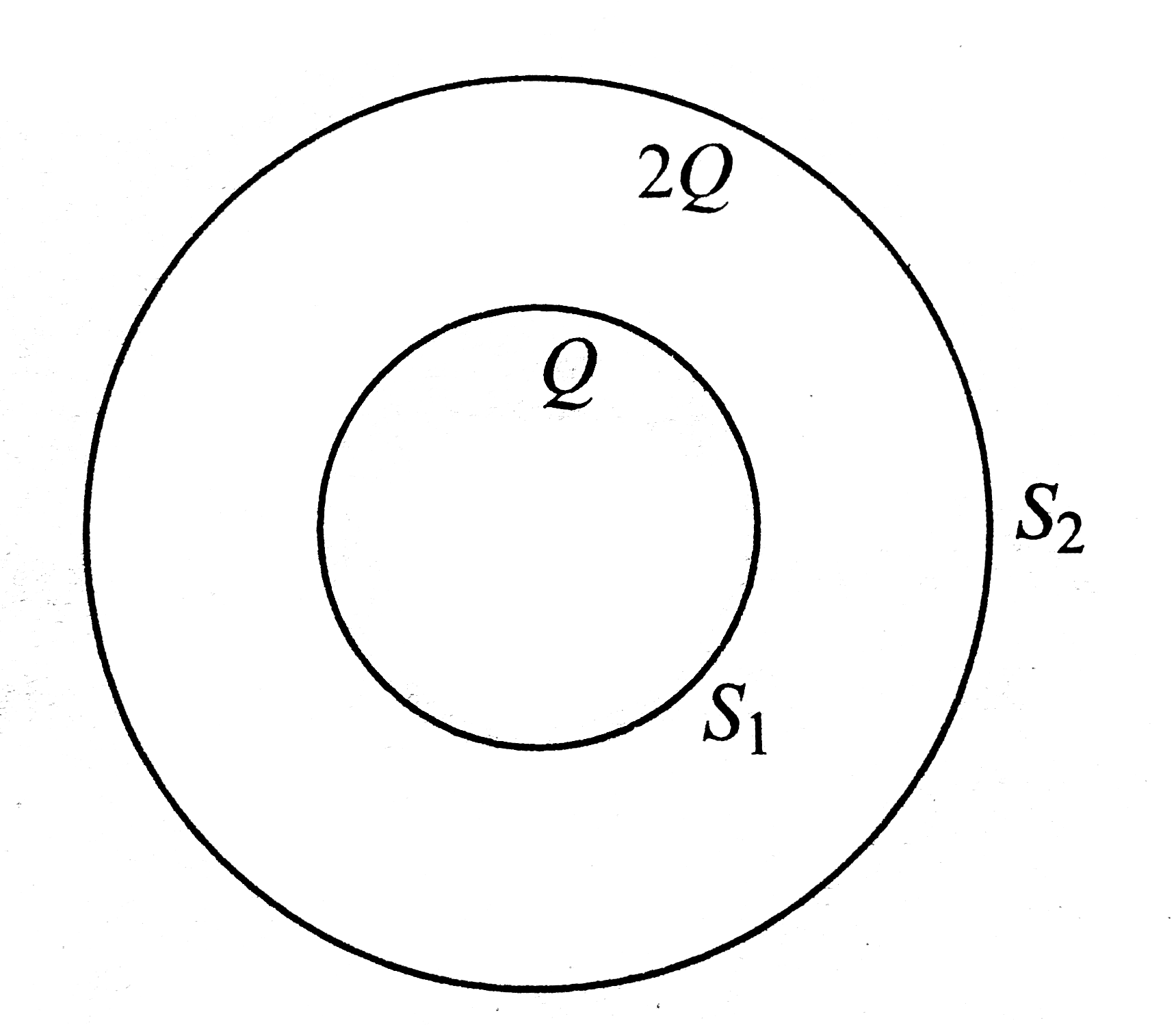S1andS2 are two concentric spheres enclosing charges Q and 2Q respectively as shown in Fig.

(i) What is the ratio of electric flux through S1andS2 ?
(ii) How will the electric flux through the sphere S1 charge, If a medium of dielectric constant K is introduced in the space inside S1 in place of air?
(iii) How wil the electric flux through sphere S1 change, if a medium of dielectric constant K is introduced in the space Inside S2 in place of air?
(i) From Gauss's theoram
electric flux through S1isϕ1=Q∈0
∴ϕ1ϕ2=13
(ii) When a medium of dielectric constant K is introduced in the space inside S1, then
ϕ1=∮−→E',d→s=∮→EK,d→s=1KQ∈0
(iii) On introducing dielectric medium inside S2, electric flux through S1 will not change.
Similar Questions
S1andS2 are two concentric sphere enclosing charges 2Q and 3Q respectively as shown in the figure. What is the ratio of the electric flux through S1andS2?
 View Solution
View SolutionS1 and S2 are two hollow concentric spheres enclosing charges Q and 2Q, respectively, as shown in figure.
i. What is the ratio of the electric flux through S1 and S2?
ii. How will the electric flux through sphere S1 change if a medium of dielectric constant 5 is introduced in the space inside S1 in place of air.
 .View Solution
.View Solution
Knowledge Check
- Question 1 - Select One
S1andS2 are two hollow concentric spheres enclosing charge Q and 2Q, respectively, as shown in figure. What is the ratio of the electric flux leaving through the surface of S1andS2?
 A14B12C13D23
A14B12C13D23 - Question 2 - Select One
Electric flux through a cube with charge q inside is
Aqε0Bq6ε0Cq3ε0D0 - Question 3 - Select One
The electric flux through a closed surface area S enclosing charge Q is ϕ If the surface area is doubled, then the flux is
A2ϕBϕ/2Cϕ/4Dϕ
S1 and S2 are two parallel concentric spheres enclosing charges Q and 2Q respectively as shown in the figure below. What is the ratio of electric flux through S1 and S2 ?
 View Solution
View SolutionS1andS2 are two bellow concentric spheres enclosing Qand3Q respectively as shown in Figure. What is the ration of electric flux through S1andS2? What would be electric flux through S1 ? If air inside S1 is replaced by a medium of dielectric constant 3 ?
View SolutionS1andS2 are two hollow concentric thin spherical shells enclosing charges Q and 2Q respectively as shown in
What is the ratio of the electric flus through S1andS2?
(ii) How will the eletric flux through the shell S1 change, If a medium of dielectric constant 5 is introduced in the space inside S1 in place of air ?
(##U_LIK_SP_PHY_XII_C01_E09_024_Q01.png" width="80%">View SolutionA charge q is enclosed as shown below the electric flux is
 View Solution
View SolutionThe electric flux through a chlosed surface area S enclosing charge Q is ϕ. If the surface area is doubled, then the flux is
View Solution

